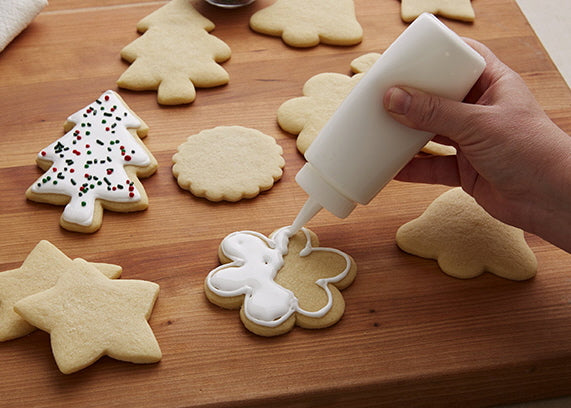Cookie Tips Recipe
Cookie Tips Recipe
HOW TO MAKE YOUR COOKIES fluffy & chewy
FOR MAXIMUM "PUFF" AND CHEWINESS IN YOUR COOKIE CREATIONS.
CHILL the dough – this will slow down spreading, cookies will be puffier; even chill the baking sheet before baking, if you like.
USE cake flour instead of all-purpose, it has more moisture and will therefore puff more (cookies will be softer and paler, though).
USING some high protein flour (such as bread flour) can make the dough hold together better, and can make a chewier cookie – but too much can make the cookies flatter and crisper – experimentation is needed.
USE solid shortening. It makes a chewier cookie than a cookie made with butter. Butter melts faster than solid shortening. Cookies will spread more if made with butter. Even half butter/half shortening will melt more slowly than butter-only. So cookies made this way still spread less than if made with all-butter.
MAKE smaller scoops (smaller cookies). They’ll puff better. Uniform smaller scoops cook more ebenly than differing sizes. Use a #20 “disher” (looks like a round ice cream scoop) for ideal & uniformly-sized cookies.
USE a larger proportion of brown sugar to white for a moist, puffier cookie. Substitute up to ALL brown for white sugar for maximum chewiness. Darker brown sugar (more molasses) attracts more moisture from the air, and will make a chewier result.
USE yokes only for a moister result – egg whites dry out cookies.
USE baking powder (1 teaspoon per cup of flour) instead of baking soda; the resulting dough will make a chewier cookie (it will spread less, since it’s more acid)
TRY HONEY Cookies made with honey (instead of sugar) will become soft as they stand after baking.
Same goes for cookies made with brown sugar.
HOW TO MAKE COOKIES crispier
USE butter instead of shortening in the cookie recipe (cookies will spread more and be thinner and
crispier). Real margarine works even better.
USE a little bit more liquid in the batter; that will help cookies to spread more, and thus be thinner and crispier.
SUBSTITUTE 1 tablespoon of corn syrup for 1 tablespoon of the sugar called for in the recipe; it will make the cookies crispier and browner.
USE bread flour for drier, crispier cookies (they will be darker, too). Bread flour absorbs more liquid from the recipe than other types of flour. All-purpose flour can also make a crispy cookie, which will be more tender than a cookie made entirely with bread flour.
REPLACE the egg called for in the recipe with milk for a crispier cookie.
USE baking soda instead of baking powder (to make the dough less acidic) A less acidic batter spreads more; cookies will be crispier. Substitute ½ teaspoon baking soda per cup of flour for the baking powder called for in the recipe.
ACID/ALKALINE ISSUES
BAKING soda in large amounts (more than ¼ teaspoon per cup of flour) doesn’t contribute to leavening: It’s there for better browning. Baking soda neutralizes acidity (cookies will be more alkaline: they’ll spread more)
IN SUMMARY
ACID dough’s and batters (such as those made with baking powder, which has acids and does not neutralize other acids in the cookie dough recipe) set faster, but do not brown as well (cookies will be puffier).
ALKALINE dough’s and batters (such as those with more baking soda) will brown better but spread more (cookies will be thinner and crispier).


